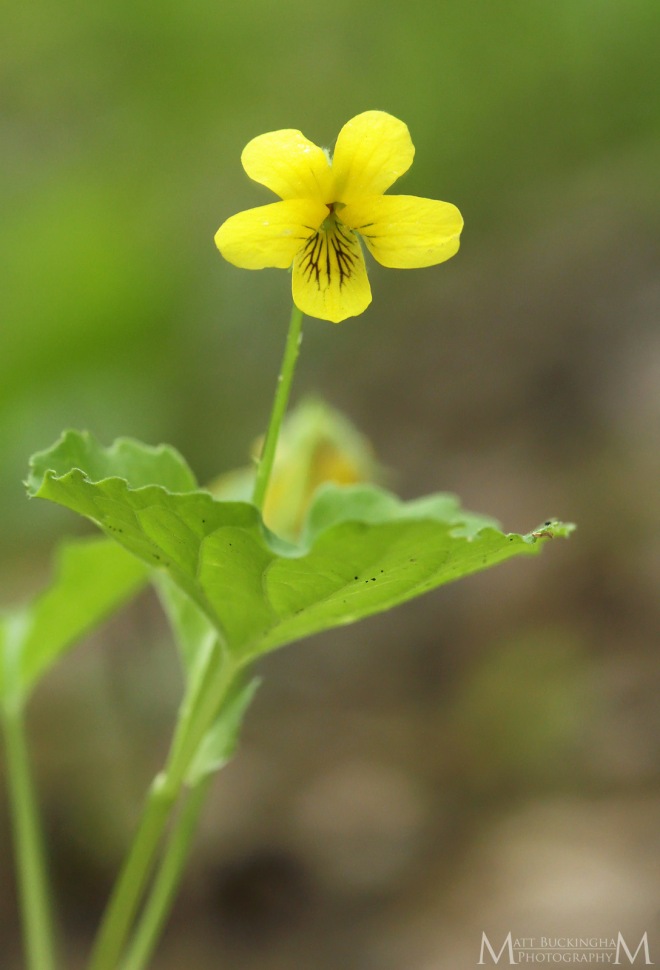
Rich Hardwood Forest
Target Species:
Tapertip Trillium (Trillium viridescens)
Downy Yellow Violet (Viola pubescens)
It’s been some time since I’ve posted about one of my “Biodiversity Targets”, those species that I included on my 2017 list of biodiversity goals. At the end of 2017, I had only tracked down around half of the species on that list, but along the way I amassed a wealth of incredible observations, adventures, and experienced more of our states biodiversity than I ever could have imagined. So I decided that instead of creating a new list or adding to the existing list, I would work over the next couple of years to finish the list I made at the start of 2017; a list that was a bit more ambitious than I had anticipated.
In early April 2018 my pursuit of these species would take me to the far northeast corner of Texas, near the Oklahoma border in search of two species that I have long wanted to see in the state. Joining me in this quest was my friend Scott Wahlberg. We set out early, in the gray of a perfect spring morning.
The counties of far northeast Texas feature a mingling of habitats typical of both the Post Oak Savannah and Pineywoods. Some communities, like the rich hardwood forests of the Sulphur River and Red River and their tributaries are unique to this part of Texas, and more similar to the forests of the Ouachita Mountains of Oklahoma and Arkansas than they are to those of the heart of the Pineywoods in Deep East Texas. Here a sweet of species reach the southwestern limit of their range. Among these are several species that are either absent from, or are very scarce elsewhere in the Pineywoods. Examples of these include trees like Silver Maple (Acer saccharinum), Black Oak (Quercus velutina), Shingle Oak (Quercus imbricaria), and Nutmeg Hickory (Carya myristiciformis). Examples also include woodlands forbs such as Fire Pink (Silene virginica), Rue Anemone (Thalictrum thalictroides), Downy Yellow Violet (Viola pubescens), Tapertip Trillium (Trillium viridescens), and more.
The latter two were the focus of this trip. In Texas, Trillium viridescens occurs in rich hardwood forests on steep river bluffs and in the damp alluvium of riparian woodlands. Here we found it growing among other interesting woodland forbs like Mayapple (Podophyllum peltatum), Veiny Pea (Lathyrus venosus), Wild Hyacinth (Camassia scilloides), and White Trout Lily (Erythronium albidum).
Trillium viridescens is a species of the central United States, primarily occurring in the Ozark Plateau, and the Boston and Ouachita Mountains. It barely enters Texas in northeastern portion of the state. The plants in the northern portions of its range generally have petals that grade from purple at the base to bright greenish yellow at the tips. Most Texas individuals, however, tend to be solid maroon to greenish purple.

Tapertip Trillium
The sessile-flowered trilliums can be a tricky group. In Texas, three species, T. gracile, T. ludovicianum, and T. viridescens are superficially similar in many ways, however when I first saw T. viridescens in the field it was immediately clear that this species was obviously different from the other two. The T. viridescens plants we observed were much larger and more robust than any T. gracile or T. ludovicianum I had ever seen. Their faintly mottled, broadly ovate leaves were much different than the state’s other trillium species, which have narrower, more heavily mottled leaves. The petals were also much larger. There are other characteristics that can be used to differentiate T. viridescens from the other two species such as a scabrous vs glabrous scape and a number of differences in flower morphology.
Seeing Trillium viridescens in the field certainly left a lasting impression. It was a special moment for me, as it was the last of our state’s five species of trillium that I had left to see. Like all of our other trillium species, T. viridescens is at risk, and is likely declining from a number of factors such as climate change and land use conversion.
Viola pubescens another characteristically eastern species that barely enters Texas in the far northeastern part of the state. It is a yellow-flowered violet that occurs through most also occurs in parts of central United States as far west as the Black Hills of western South Dakota and eastern Wyoming. While I have seen and photographed this species in the southern Appalachians, I had long wanted to see it in Texas.
On that fine spring day, we found it in a mature riparian forest along a small order stream. Shaded by an overstory of Silver Maple, Red Maple, Shumard Oak and Sweegtum, we found it growing alongside a variety of other woodland herb including Podophyllum peltatum, Packera glabella, Packera obovata, Viola sororia, and Erythronium albidum.

Downy Yellow Violet

Downy Yellow Violet
While exploring the backgrounds of northeast Texas we spotted several large clumps of Eastern Bluestar (Amsonia tabernaemontana) growing in a remnant prairie. Scott and I stopped a moment to photograph them, and discussed what the area must have looked like before the hand of man left it forever changed. We also pondered the possibility that prairie species like the Southern Crawfish Frog might just still hang on here. Though I haven’t spent much time in this part of the state, I quickly gained an appreciation of just how diverse it really is.

While most of northeast Texas remains rural and relatively undeveloped, there is little public land, and most of these populations are on private land and vulnerable. There is still hope, however. Through conservation efforts with and by private landowners there is hope that these lovely members of our flora remains for future generations to enjoy.
